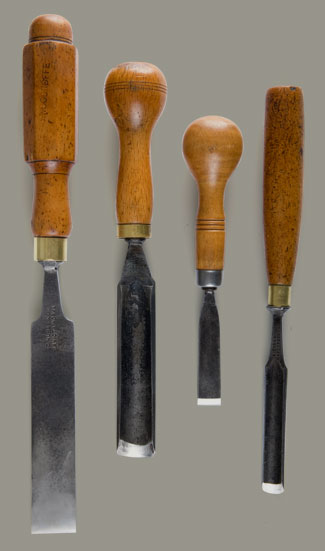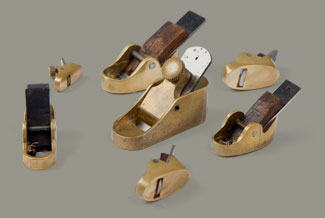
Construction Methods

My deep understanding of viol construction methods really comes from my time spent working for Dietrich Kessler at Edward Withers in London. As I mention in my biography, just before I joined Kessler he acquired a Richard Meares' bass viol that proved a construction method our industry had previously only theorised about. I was lucky enough to have access to this instrument and it inspired my viol making.
Before the instrument came to Kessler he was trying to recreate the 'English arching' and doing it by carving viol fronts from a solid piece of wood; frustratingly the carving never achieved the correct results. Then, during the restoration of the Meares' viol there was definite evidence that the front had been bent and not carved – you could see the little burn marks from where the wood was heated for bending. So the Meares' viol that came to Kessler resulted in the rediscovery of the bent front construction method to achieve the so-called 'English arching' style, and it was critical to our industry.
It proved the method of making fronts for viols by bending wooden staves and then joining them and gluing them rather than carving a solid piece of wood. The effect of this is that it allows you to work the front to be much thinner than if you carve it, and so the sound of the viol is more immediate, crisp and overtone rich.
 Kessler asked Stephen Barber to make detailed working drawings of the instrument, the joints and the 7 staves that make up the front – and from drawing the joints there was undeniable proof that the staves had to be bent! Kessler immediately started to make a copy of the original and initially he struggled as he didn't know how to do it. Finally however he achieved it, and there - for the first time in his long career - was the English arching he had always been trying to achieve! It was a spine tingling moment.
Kessler asked Stephen Barber to make detailed working drawings of the instrument, the joints and the 7 staves that make up the front – and from drawing the joints there was undeniable proof that the staves had to be bent! Kessler immediately started to make a copy of the original and initially he struggled as he didn't know how to do it. Finally however he achieved it, and there - for the first time in his long career - was the English arching he had always been trying to achieve! It was a spine tingling moment.
A lot of other makers build the ribs of the viol on a mould – this is an accepted traditional way of doing it - but if you really look into it and you examine the 4 outlines of any original instrument, you will see with the old viols that they are never the same. This is clear proof that the ribs were not traditionally built on moulds and so I build the ribs up from the back without a mould. Of course, this changes the construction method again and it changes the way of looking at how to build an instrument. I do not copy, I make originals and I create my own sound because I want to see and hear the maker behind the instrument. If an instrument is a copy then I feel the maker is hiding – an original creation speaks a lot more.